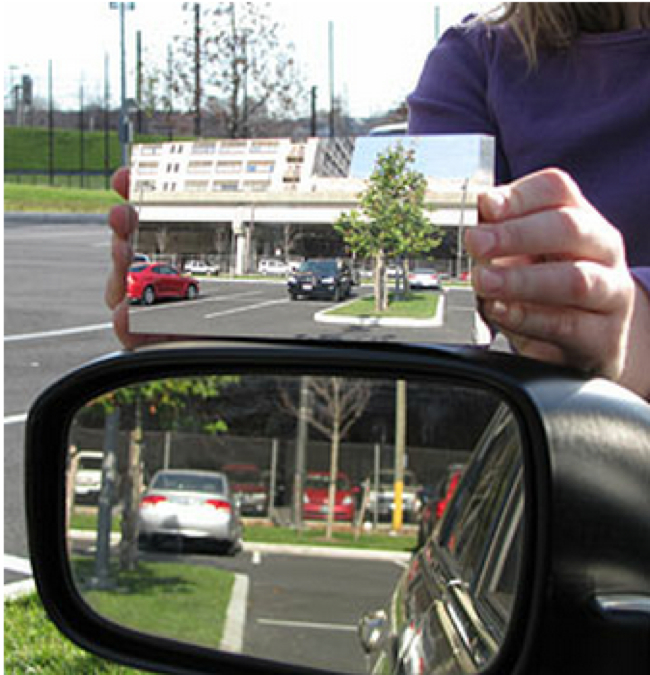New Vehicle Side Mirror Eliminates Driver Blind Spot

The days of worrying about a car lurking in your vehicle’s blind spot could soon be a thing of a past, thanks to a new subtly curved side mirror that dramatically increases the field of view while producing minimal distortion.
The new mirror, invented by mathematician Andrew Hicks at Drexel University, was awarded a U.S. patent on May 15, 2012.
Traditional flat mirrors on the driver's side of vehicles give drivers an accurate sense of the distance of cars behind them but have a very narrow field of view. As a result, there is a region of space behind the car, known as the blind spot, that drivers can’t see via either the side or rear-view mirror.
[Coolest Vehicles You'll Never Get to Ride]
It's not hard to make a curved mirror that gives a wider field of view – no blind spot – but in the past, it's been at the cost of visual distortion and making objects appear smaller and farther away.
Hicks's mirror, in contrast, has a field of view of about 45 degrees, compared to the 15 to 17 degrees of view in conventional side mirrors. Best of all, the visual distortion of shapes and straight lines are barely detectable.
Hicks designed his mirror using a mathematical algorithm that precisely controls the angle of light bouncing off of the curving mirror.
Get the world’s most fascinating discoveries delivered straight to your inbox.
“Imagine that the mirror’s surface is made of many smaller mirrors turned to different angles, like a disco ball,” Hicks said in a statement.
“The algorithm is a set of calculations to manipulate the direction of each face of the metaphorical disco ball so that each ray of light bouncing off the mirror shows the driver a wide, but not-too-distorted, picture of the scene behind him.”
In the U.S., Hicks's mirrors could soon be available as aftermarket products that drivers and mechanics can install after purchase.
This story was provided by InnovationNewsDaily, a sister site to Live Science. Follow InnovationNewsDaily on Twitter @News_Innovation, or on Facebook.



